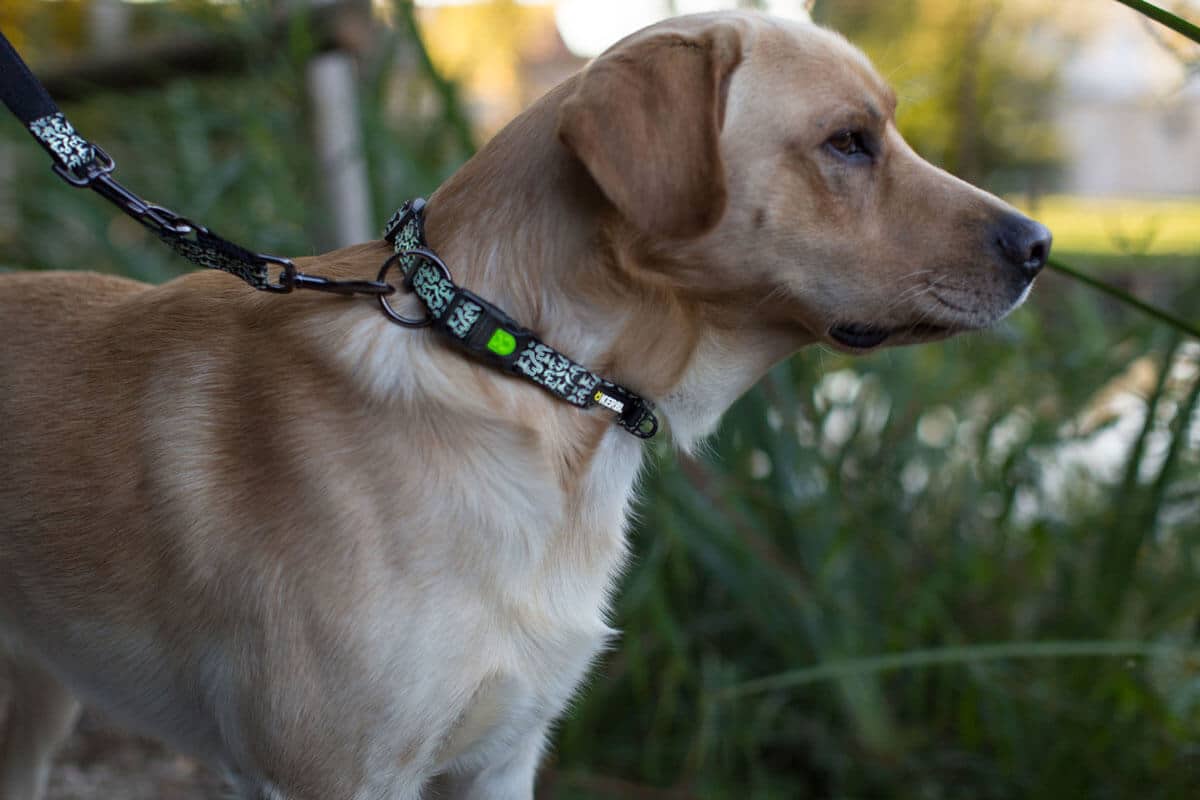Who is actually going for a walk with whom?
Dog lovers ask themselves this question from time to time. Sometimes the dog tugs at the lead and wants to move on quickly, sometimes you’re in a hurry or want to be a bit more sporty on the road, and your dog dawdles around and sniffs every bush at the side of the path.
There are solutions for this. If you keep a few simple things in mind, you and your faithful companion will have much more fun on your daily walk.


Tip 1: Avoid stress and distraction
For a nice walk, avoid stress and temporarily do without your smartphone. Take your time and devote yourself completely to your dog without being distracted by permanent digital availability.
Try not to think about things to do, about yesterday or tomorrow. Do what your dog does. Live in the moment. In the here and now! Your relaxation will be transferred to the dog and you can enjoy the walk together.

Tip 2: Be considerate of other walkers and dogs
If everyone looks out for each other, the walk is fun for everyone. If another dog comes towards you on a lead, put your faithful companion on a lead too. Let him run close to you until you reach the other dog. Usually the other dog is not on a lead for no reason.
If he seems anxious, don’t just let your dog run up to him. If you remain attentive and considerate, unpleasant experiences can be avoided and everyone can enjoy a more relaxed nature experience.

Tip 3: Variety is the spice of life
Many people tend to repeat the tried and tested. That provides security. But dogs also start to get bored if they always experience the same thing. Look for variety.
Walk cross-country or take the usual walk the other way round. Take your dog to a completely new area. There is a lot to discover together. Different soils and smells, soil to dig in. Maybe even a dip in a lake. Offer your dog new and surprising experiences.

Tip 4: Let your dog take the lead from time to time
Surprise your dog and let him decide which path to take. An area where you can let the dog run free would be well suited for this. Wait patiently until your dog runs off on its own.
Many dogs hesitate to go first. If the dog follows its nose and its nature, it will enthusiastically lead the way when you accompany it. Maybe he walks the usual route or discovers new paths. If the dog cannot run free, a loose leash will also work. If you get lost, a dog that is used to leading the way is more useful than Google Maps.

Tip 5: Experience adventures together
Mastering something new gives us self-confidence. Get out of your comfort zone. In summer you can enjoy swimming in the lake with your dog.
Discover nature as an adventure playground. Balance on a fallen tree, walk along a rushing torrent, climb a small mountain or jump from tree stump to tree stump. Rediscovering nature offers you and your dog an exciting outdoor experience. You will gain a completely new perspective on your surroundings and your dog will be thrilled to experience these adventures with you.

Tip 6: Work with rewards
Is your dog distracted somewhere while sniffing around? Surprise him with a few treats or a toy that you simply drop at the edge of the forest. Kneel down there and play around in the grass with your fingers. Your dog will arrive curious and want to see what’s interesting there.
As soon as he is with you, praise him and give him the toy or treats. This links the dog with “when I come to my owner, I get a reward”. With play, fun and rewards, you can get your dog to come to you despite major distractions and you can let him run free more often.

Tip 7: Overcome unpleasant situations together
Never force your dog to endure an unpleasant situation alone. You should let him know that you have everything under control and that he doesn’t have to worry about you. You provide protection and security and he can take his cue from you.
This does not mean that you should always avoid negative situations or actively avoid them. All you will get is a fearful dog. You don’t want that. Set a good example and your dog will follow.

Tip 8: Communicate with body language
Not talking does not mean that you do not communicate with your dog. Say nothing for once and just talk to your body. Dogs usually cannot decipher our words and therefore pay close attention to our body language in order to understand us.
Observe yourself when you give your dog a word command. Perhaps you are indicating something completely opposite with your body that does not match the word. This can be quite confusing for your dog.

Tip 9: Just let the dog be a dog
A dog detects its surroundings with its nose. Give him the opportunity to sniff the area as often as possible. Every corner of the house, garbage can and tree contain odors and important information for the dog.
He learns all about the mood and health of the other dogs in the neighborhood. Even if it seems disgusting to us humans that the dog sniffs the urine of other dogs, for him it is important and a completely natural behavior.




Social Media